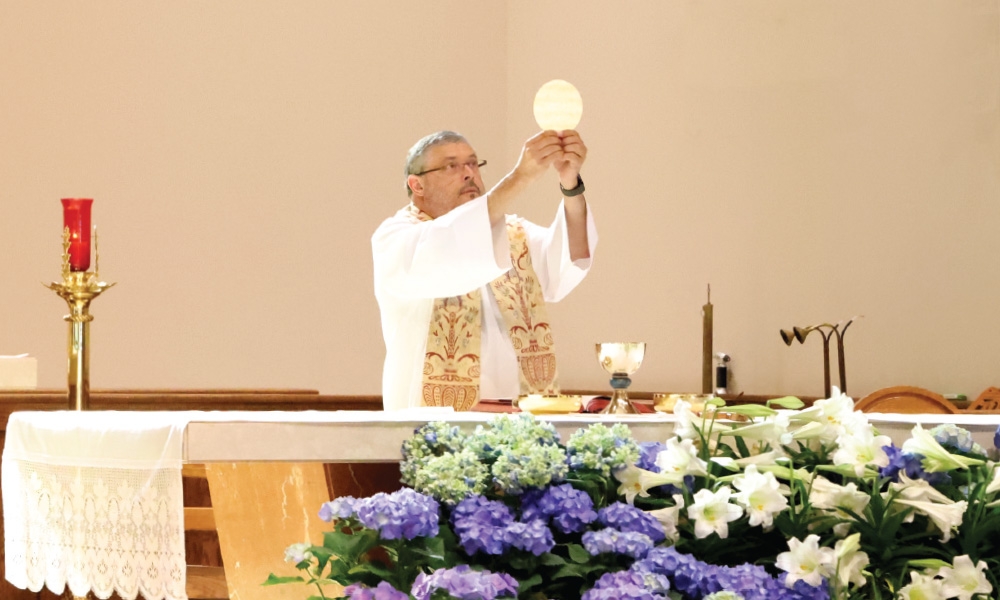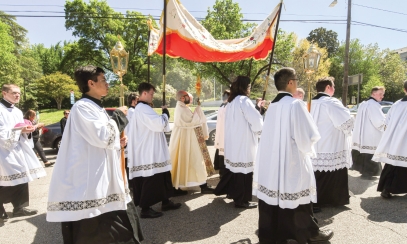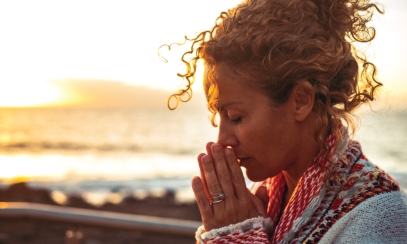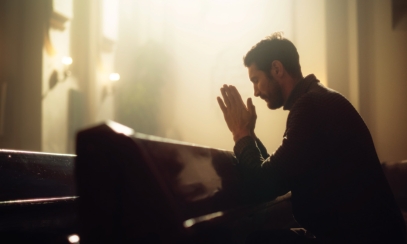
Eucharistic Revival and Synodality
If we follow Catholic news, this month we clearly see a confluence of a couple of current events in the Catholic Church. The first event is something we have been talking about monthly for the last year in this space — the Eucharistic Revival. It’s a process set in motion by the bishops of the United States to deepen our eucharistic devotion and strengthen our evangelization efforts.
The second is another process that we have been actively engaged in as parishes, a diocese and a global Church — the Synod on Synodality. It’s a process set in motion by the Holy Father to discern ways to become a more united and listening Church. These two things may seem to be disconnected from or even at odds with each other, but nothing could be further from the truth for several reasons.
First and most simply, because the Church is one, all of the efforts of the Church are interconnected. In fact, these movements have some similar features. They both involve efforts at different levels of organization in the Church. The Revival and the Synod have been represented by different phases, touching the Church at its most vital and localized level, the parish. They also have key highlight events, though these are different in nature.
We have two sessions of the XVI Ordinary Synod of Bishops, where bishops and other representatives throughout the world will meet in Rome this month and again in October 2024. The Eucharistic Revival has some key events also, including those happening locally. And for us, we’re holding a Diocesan Eucharistic Congress on April 6, 2024, and participating in the National Eucharistic Congress in July 2024 (visit charlestondiocese.org/eucharistic-revival for more details).
Apart from these more extrinsic similarities, I want to propose that there is something much deeper uniting these two movements. To explore this, we really need to go back to the notion of synodality, the theme of this synod. Synods are not anything new; think of them as assemblies. The history of the Church is filled with local and regional synods and councils, plus larger, global gatherings that we call ecumenical councils. This particular synod is the 16th ordinary synod that has taken place since the Second Vatican Council. The topic happens to be synodality, or togetherness, itself.
The notion of synodality comes from the idea and practice of using synods in the life of the Church. The term synod comes from the Greek word for sun, meaning together, combined with hodos, meaning way. The image that springs from this is walking along the way together. It is no coincidence that one of the earliest names for Christianity was The Way, as we think of ourselves as a pilgrim Church. So, the idea of synodality and the adjective synodal have a broader meaning than that of simply getting bishops and other leaders together periodically.
The point of having a synod on synodality is to examine the ways that we, as a Church, are and are not walking together and trying to improve upon those areas where improvement is necessary. Since the synodal process began, there have been many misconceptions about what the process is and what its goals are. These have been spread by supporters and detractors alike. Putting those misconceptions aside, it is essential for us to remember that this process is about together discerning ways as God’s pilgrim people to best live out our understanding of the Church.
This brings us back to the idea of Eucharistic Revival. When we talk about the Eucharist and the eucharistic liturgy, we are talking about the moment we most visibly walk together as a Church. At Mass, we worship together at one altar. In communion, we receive together the nourishment from our common source. As the body of Christ, the Church, we together receive the eucharistic body of Christ. This is the highpoint of our union, our togetherness, communion as a Church because it is our efficacious celebration of union with Christ (communion).
The key to understanding sacraments is the tangibility, the physicality, of what we see and experience that really causes what it signifies. If we want to emphasize synodality, we cannot do so without a sacramental expression of it. We find this expression in the Eucharist. Synodality flows from the communion that results from receiving the sacrament of the Eucharist.
These different movements have unique points of emphasis and should not be simply amalgamated. Synodality puts the emphasis on the pastoral practice of the Church, particularly in how leadership, ministry and evangelization are exercised. Eucharistic Revival puts the emphasis on our common worship. It is an appreciation of the transformative gift of the real presence — Christ himself. Although they are connected, one is aimed at ongoing institutional conversion; the other is aimed at ongoing personal conversion.
Despite those distinctions, both movements stem from something at the very heart of the Gospel itself: communion. A truly eucharistic Church must seek to overcome divisions and exclusion in all the other areas of her life. In turn, a truly synodal Church can only derive the strength, wisdom and grace necessary to discern fruitful paths forward from the Eucharist and the eucharistic liturgy.
The Eucharist is the source and summit of synodality.
Michael Martocchio, Ph.D., is the secretary of evangelization and the director of the Office of Catechesis and Christian Initiation. Email him at mmartocchio@charlestondiocese.org.



